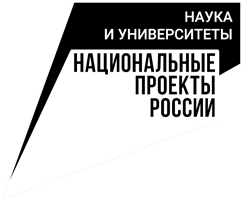Seminar Leader: Sadovnichy V.A., academician, rector of Lomonosov Moscow State University
Co-leaders of the seminar:
- Wilfand R.M., Doctor of Technical Sciences, Scientific Director of the Hydrometeorological Center of Russia
- Dobrolyubov S.A., Corr. RAS, Dean of the Faculty of Geography, Lomonosov Moscow State University
- Lykosov V.N., Corr. RAS, chief scientist Institute of Computational Mathematics, Russian Academy of Sciences, Head. Laboratory of Supercomputer Modeling of Natural and Climatic Processes of RCC MSU
- Stepanenko V.M., Doctor of Physics and Mathematics, Deputy Director of RCC MSU
Scientific Secretary of the seminar: Mortikov E.V., Ph.D., Researcher of RCC MSU
PROGRAM
17:30
| Platov G.A. | Institute of Computational Mathematics and Mathematical Geophysics SB RAS |
| Krupchannikov V.N. | Institute of Computational Mathematics and Mathematical Geophysics SB RAS |
| Golubeva E.N. | Institute of Computational Mathematics and Mathematical Geophysics SB RAS |
| Borovko I.V. | Institute of Computational Mathematics and Mathematical Geophysics SB RAS |
NUMERICAL MODELING OF THE COMPONENTS OF THE ARCTIC CLIMATE SYSTEM AND STUDY OF THE FEATURES OF THEIR INTERACTION
One of the challenges facing modern science is the assessment of future climate change and its impact on the environment. Ecosystems of Siberia and the Arctic coast of eastern Russia are most sensitive to climate change and to anthropogenic impacts. The most noticeable consequences of climate change in the Arctic are the melting of sea ice, the degradation of permafrost, leading to the destruction of the infrastructure of the polar regions, migration to the north of the border of forest vegetation. Thawing of both the continental and the shelf permafrost is accompanied by emissions of greenhouse gases and the oxidation of the waters of the Arctic Ocean. To analyze the consequences of climatic and environmental changes in this region, it is necessary to study the physical mechanisms that determine the state of a multicomponent climate system. To obtain estimates of possible changes in the natural environment in the world, physico-mathematical models are widely used that predict the future state of the components of the climatic and ecological system based on scenario calculations.
A program complex [1] was developed at the ICM & MG SB RAS, which includes a number of models of the components of the climate system, connected through a special interaction unit. The atmospheric block is represented by numerical models of the atmosphere of PlaSim [2] and, in the future, INMCM [3], which also include blocks of land and vegetation. The ocean is represented by a system of embedded ocean models of various resolutions and levels of parameterization of physical processes, including the SibCIOM model as applied to the World Ocean [4] and the Arctic Ocean and the North Atlantic [5], as well as the SibPOM model as applied to a number of marginal seas of Russia [6] taking into account sea ice (CICE-3, LANL) and river runoff.
The report discusses the results of numerical modeling. Analysis of the dynamics of the Arctic ice field showed that one of the most effective factors contributing to the reduction of sea ice are processes with a time scale of atmospheric blocks [7]. When considering thermodynamic processes, we came to the conclusion that the most significant changes due to the climatic trend in the ice field occur due to changes caused by long-wave radiation fluxes. With increasing surface temperature, air humidity near the ocean surface increases, and as a result, a larger part of the long-wave radiation emitted by the surface is reflected back by moist air, creating a semblance of the greenhouse effect. In addition, the relationship between the basic atmospheric circulation structures and the formation and reduction of ice, including possible feedbacks, has been established, based on EOF analysis, tendencies of atmospheric forcing variability and its degree of influence on the ocean-ice system have been identified [6,7,8].
Some aspects of the growth of stable circulation regimes at mid latitudes are also discussed, such modes as stationary wave structures and blockings and how they can change under conditions of climate change are considered [9]. Arctic warming is considered as one of several factors affecting the dynamics of the atmosphere. In the middle latitudes, long-term extreme events, blocks, are usually associated with the preservation of certain circulation modes, and extreme events are also often associated with such modes. Blocks often exhibit a large anticyclonic anomaly and reverse the zonal flow so that eastern winds appear in some part of the blocked area, and the usual western flow is interrupted for a long period (a week or longer), these events are often associated with extreme weather.
________________________________________
- [1] Platov G., V Krupchatnikov, Y Martynova, I Borovko and E Golubeva (2017) A new earth’s climate system model of intermediate complexity, PlaSim-ICMMG-1.0: description and performance // IOP Conf. Ser.: Earth Environ. Sci. 96 012005
- [2] Borovko I.V., Krupchatnikov V.N., Responses of the Hadley cell and extratropical troposphere stratification to climate changes simulated with a relatively simple general circulation model // Numerical Analysis and Applications. 2015. Т. 8. № 1. С. 23-34.
- [3] Дымников В.П., Лыкосов В.Н., Володин Е.М., Математическое моделирование динамики земной системы // Известия Российской академии наук. Физика атмосферы и океана. 2015. Т. 51. № 3. С. 260.
- [4] Голубева Е.Н., Иванов Ю.А., Кузин В.И., Платов Г.А., Численное моделирование циркуляции Мирового океана с учетом верхнего квазиоднородного слоя // Океанология. 1992. Т. 32. № 3. С. 295.
- [5] Голубева Е.Н., Платов Г.А., Якшина Д.Ф., Численное моделирование современного состояния вод и морского льда Северного Ледовитого океана // Лед и снег. 2015. № 2 (130). С. 81-92.
- [6] Платов Г. А., Голубева Е. Н. Взаимодействие плотных шельфовых вод Баренцева и Карского морей с вихревыми структурами // Морской гидрофизический журнал. 2019. Т. 35, № 6. С. 549–571. doi:10.22449/0233-7584-2019-6-549-571
- [7] Platov, G.A., Golubeva, E.N., Kraineva, M.V., Malakhova V.V. Modeling of climate tendencies in Arctic seas based on atmospheric forcing EOF decomposition. Ocean Dynamics 69, 747–767 (2019). doi: 10.1007/s10236-019-01259-1
- [8] Platov G, V Krupchatnikov, and I Borovko (2019) A study of feedbacks and the formation of climate trends in the Arctic climate system // IOP Conf. Series: Earth and Environmental Science, Vol.386 012004, doi: 10.1088/1755-1315/386/1/012004
- [9] Borovko I.V., Krupchatnikov V.N. (2019) On the polar vortex streamer dynamics // Bull. Nov. Comp. Center, Num. Model. in Atmosph., etc., Vol. 17, P. 1–8
Due to the self-isolation regime, the seminar will be held in the form of a webinar on the Zoom platform.
To participate in the webinar, we ask you to enter your data in the Google spreadsheet:
https://docs.google.com/spreadsheets/d/1OmkteF7ZzhIAXoWA-f_tpjI5YJMqVGUSILN2lcPmuuA/edit?usp=sharing
A link to the Zoom conference will subsequently be sent to your email address.
Instructions for installing and using the Zoom platform are available here:
https://support.zoom.us/hc/ru/articles/201362033-Начало-работы-на-ПК-и-Mac

